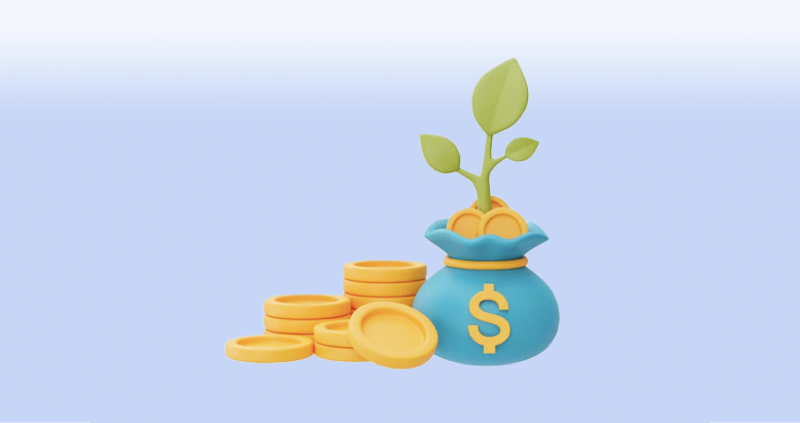How to invest in exchange-traded funds (ETFs): A savvy saver’s guide
All you need to know about exchange-traded funds
ETFs are investment funds that give you access to a diverse range of assets: They trade on stock exchanges, but can include stocks, bonds, or real estate investment trusts.
ETFs are popular with beginners and seasoned investors alike: ETFs are seeing a growth in popularity due to their reputation for being accessible and easy to navigate.
ETFs may work best as part of a greater financial portfolio: ETFs have the potential to provide good returns over the longer term, while dividend ETFs could even provide regular income.
ETFs explained: What are ETFs, and why do people invest in them?
ETFs, or exchange-traded funds, are investment funds that trade on stock exchanges — just like individual stocks. But unlike buying a single share of a company, investing in an ETF gives you access to a basket of assets, which might include stocks, bonds, or even real estate investment trusts (REITs), within a single trade.
They’ve recently grown in popularity because they combine features of mutual funds, including access to a range of assets, with the flexibility and liquidity of stocks. That’s why beginner investors sometimes opt for ETFs. If you’re focusing on savings, long-term investments, or passive income, ETFs could be an option for your portfolio.
How do ETFs work?
To explain ETFs in simple terms, imagine a pre-packed basket of shares or bonds that you can buy through your brokerage account. Many ETFs track a specific index or theme. For example, the MSCI World Index ETF includes companies from developed markets across the globe, while some Vanguard UCITS ETFs focus on dividend-paying U.S. stocks.
ETFs are typically available commission-free (depending on your brokerage deal) and can be traded throughout the day, unlike mutual funds, which are priced only once, at the end of the day.
What are the benefits of investing in ETFs?
ETFs can offer a number of advantages, depending on an investor’s goals and strategy:
Diversification: Many ETFs spread your money across multiple assets or sectors.
Fewer fees: ETFs generally have a lower expense ratio than actively managed funds.
Accessibility: ETFs are widely available through brokerage platforms, often with low minimums.
Transparency: Most ETFs publish their holdings daily.
- Liquidity: Because they’re exchange-traded, you can buy or sell ETFs during market hours.
Risks to be aware of with ETFs
As with any type of investment, ETFs come with risks:
Market volatility: ETF prices can fluctuate with the market.
Tracking error: Some ETFs may not perfectly mirror the performance of their underlying index.
Thematic concentration: Sector-specific or thematic ETFs may offer less diversification.
- Hidden fees: While many ETFs can be considered low-cost at first glance, some might carry higher-than-expected fees or expense ratios, or extra expenses like bid-ask spreads.
How to invest in ETFs
Understanding how to invest in exchange-traded funds effectively means aligning your choices with your overall financial goals.
It depends on your goals
Before choosing an ETF, you might consider your objective and desired market exposure.
Investors looking for long-term growth could look at broad market ETFs. This includes ETFs that track the S&P 500 or other Total Market ETFs.
Dividend ETFs can give investors a regular flow of income.
Investors who prioritize sustainability in their finances might explore ESG (Environmental, Social, and Governance) ETFs.
Bond or Treasury-linked ETFs can preserve capital.
Evaluating ETF metrics
When researching ETFs, key metrics to consider include:
Expense ratio: This is the annual cost of owning the ETF.
Fund size: Larger funds tend to be more liquid and easier to trade.
Tracking error: How closely does it follow the underlying index?
Holdings: What are the assets the ETF owns?
Dividend yield: If generating income is your goal, this is crucial.
- Issuer: Well-known providers include Vanguard, BlackRock (iShares), and Invesco.
Exploring dividend ETFs
Dividend ETFs are designed to provide investors with regular income by investing in companies that pay dividends. This regular income could support income gained through work or other investments, or help contribute to your retirement fund later on in life.
What is a dividend ETF?
A dividend ETF holds shares of companies known for paying consistent dividends. Rather than hand-picking dividend stocks yourself, this ETF does it for you — often tracking a dividend-focused index like the MSCI High Dividend Yield Index.
Pros and cons of high dividend ETFs
Pros
Reliable income: Provide a regular cash flow, which some investors value.
Lower volatility: Dividend-paying companies are often well-established and they may be less volatile.
- Reinvestment opportunities: Dividends can be reinvested to grow the portfolio over time.
Cons
Limited growth: High dividend payers might reinvest less into expanding their business.
Tax implications: Dividends may be taxable (depending on where you live).
- Concentration risk: Many dividend ETFs are heavily weighted in specific sectors, such as utilities or financials.
Considerations before investing in dividend ETFs
Before deciding to invest in a dividend ETF, you might ask yourself the following:
Is income or growth more important to you?
How does the fund’s strategy work?
Are you in a high tax bracket?
Do you want U.S.-only companies, or global exposure?
How does this ETF fit within your overall asset mix?
How to choose the right ETF for your financial situation
There’s no one-size-fits-all approach to ETF investing. What works for one investor might not suit another, just like with any other type of investment.
Matching ETFs to different investment goals
- Long-term growth: Broad, global ETFs (such as those following global indices) can provide diversified, low-cost exposure.
- Income or capital preservation: Dividend-focused or bond ETFs provide access to income-generating or lower-risk assets.
Using ETFs alongside traditional savings products
ETFs aren’t a replacement for your savings account, but they complement it well. For example, some investors keep an emergency fund in a high-yield savings account, while using ETFs for growth-focused investing over the medium to long-term. Some brokerages offer commission-free ETFs, which may help reduce trading costs.
Common ETF mistakes beginners make
- Chasing performance: Just because an ETF has done well in the past doesn’t mean it will continue to do so.
- Overlooking fees: Even low expense ratios can eat into returns over time. Make sure you understand the fees you’ll have to pay, including potential brokerage fees.
- Lack of diversification: Buying multiple ETFs with overlapping holdings can lead to overexposure to certain companies or sectors.
- Neglecting asset allocation: ETFs may be considered as part of an overall investment strategy, alongside other holdings.
- Skipping research: Look under the hood — what’s actually in the ETF? Reviewing an ETF’s structure helps investors understand what they are investing in and any potential risks.
ETFs as a piece of your financial puzzle
ETFs can be a smart way to invest, whether you're aiming for long-term growth, income, or just trying to outpace inflation. But like all investment tools, they work best when used with intention.
Investors might think of ETFs as one piece of a broader financial puzzle, working alongside savings to help meet their goals.
At Raisin, you can complement your investment strategy with flexible savings accounts that provide easy access to your funds and competitive interest rates.
FAQs about investing in ETFs
What’s the difference between high dividend ETFs and growth ETFs?
The main difference is their strategy.
High dividend ETFs invest in companies that regularly pay dividends, providing income through payouts in addition to potential market gains.
Growth ETFs invest in companies expected to grow over time, with an emphasis on capital appreciation rather than regular income.
Are ETFs good for beginners?
Investing in ETFs may be a practical choice for beginners, as they enable exposure to a range of assets, providing diversification without having to pick individual stocks or bonds.
How do I buy an ETF?
To buy an ETF, you first need to open a brokerage account. This can either be done via some banks or through a specialist broker. Then you’ll be able to explore a range of ETF investments based on your financial goals.
Can you lose money in a dividend ETF?
As with any type of investment, there is always the possibility that you will get less out than you put in with a dividend ETF. The income generated from dividends does not guarantee against potential losses in the ETF’s market value.
The above article is intended to provide generalized financial information designed to educate a broad segment of the public; it does not give personalized tax, investment, legal, or other business and professional advice. Before taking any action, you should always seek the assistance of a professional who knows your particular situation for advice on taxes, your investments, the law, or any other business and professional matters that affect you and/or your business.


